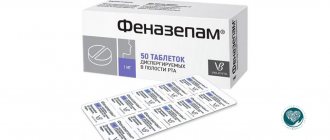Best before date
Batteries have a shelf life that depends on their:
- containers;
- type;
- production technologies;
- storage conditions.
The shelf life is the amount of time the battery will work properly before it needs to be replaced. During this period, the manufacturer guarantees that the power supply will provide standard characteristics.
According to the Decree of the Government of the Russian Federation of June 16, 1997 N 720 for primary cells and batteries, manufacturers must indicate the expiration date after which their products may have a negative impact on humans or the environment.
Operating Tips
- Do not purchase batteries in reserve and monitor the release date.
- Batteries do not tolerate negative temperatures.
It is not advisable to purchase batteries on open shelves in winter.
- Do not forget the power components in the battery compartment of the device if it is not used frequently.
- Regular batteries are not rechargeable ; such actions can cause a fire or even an explosion.
- Discharged salt batteries may leak ; they should not be left in devices.
- Due to toxicity, used batteries must be transferred for processing to special organizations that exist in large cities.
Is it possible to return the product to the store within 2 weeks? Read the next article.
Where is it listed?
The expiration date is usually indicated on the power supply housing; it can be duplicated on the box or blister. All manufacturers are required to indicate the production date on batteries. It is from this period that the shelf life begins to be calculated.
The production date is indicated in the form of a code:
- first digits (one digit) day of issue;
- the next two numbers (or letter) are the month;
- the last digits are the year.
If the month is marked with a letter, then “A” means January, “B” means February, etc.
How to use rechargeable batteries correctly
The first rule is to use batteries of the same capacity with the same charge level. It is desirable that the manufacturer be the same. Everything here is approximately the same as with RAM in a computer. Only in dual-channel mode the batteries are unlikely to work.
Well, the second rule, which everyone usually forgets, is that you should not wait until the batteries are completely discharged. It's better to recharge them in advance. Otherwise, the battery life will be dramatically reduced.
From personal experience, I will say that I have never followed this rule (it is difficult to determine the state of battery charge when using them in a computer mouse and keyboard), but I do not experience any special problems with batteries. They've been working like clockwork for three years now.
But if you are using batteries in a flashlight and see that the brightness of the light has sharply decreased, then it is better to recharge. This way you will also protect yourself in the event of an unexpected power outage (which, as it happens, no one usually reports in advance), in which this very flashlight will help you survive the darkness.
How much is it?
The shelf life of energy sources is due to the natural loss of charge by the electrolyte. In addition, the shelf life depends on:
- battery type;
- quality of materials used in production;
- operating and storage conditions.
For galvanic cells of the same type from different manufacturers, the shelf life will be the same (with a slight deviation).
Alkaline (alkaline)
The electrodes of alkaline batteries are made of manganese or zinc, and the electrolyte is potassium hydroxide. The shelf life of such power supplies is five years, after which they gradually lose capacity. Unlike salt analogues, they almost never leak.
The advantages of alkaline elements include:
- high efficiency;
- resistance to low temperatures;
- affordable price.
The disadvantages of this type of power supply include:
- significant weight;
- impossibility of recovery.
Galvanic products are used in devices with high energy consumption:
- electric shavers;
- voice recorders;
- players;
- powerful flashlights;
- photo flashes.
Salt
Salt batteries use zinc or manganese electrodes that are connected by a saline solution. Typically, ammonium chloride serves as the electrolyte.
- If the product is in optimal conditions, then manufacturers guarantee that the characteristics they declare will be maintained for two years.
- If storage was carried out at low temperatures, the charge often disappears even before use.
Disadvantages of salt elements:
- instability to temperature changes;
- often leak towards the end of their service life.
The main advantage is the low price.
It is advisable to use them in devices with low power consumption:
- scales;
- alarm clocks;
- remote controls;
- watches, etc.
Silver-zinc
In silver-zinc power supplies, zinc serves as the anode and silver as the cathode. The electrolyte is a potassium or sodium solution. The main advantage of such products is their long shelf life, up to 15 years.
Other benefits:
- low self-discharge parameters;
- resistance to high discharge currents;
- resistance to external influences;
- high specific energy levels.
A significant disadvantage is the high cost.
Batteries of this type are used as power sources for devices that require stable operating voltage and high energy density per unit volume:
- medical equipment;
- laser pointers;
- Kids toys;
- PC motherboards;
- touch lighters, etc.
Zinc air
A special type of battery in which ambient oxygen acts as the cathode. Thanks to the latter, a larger amount of zinc powder is placed inside the element, which gives the product greater energy intensity. The latter is the main advantage of batteries of this type.
For a chemical reaction to occur, there are several holes on the side with a positive charge through which air enters. The zinc is oxidized, resulting in a current being generated .
To prevent premature entry of oxygen, the holes are covered with film during manufacturing. After removing it, the battery begins to work regardless of whether it is in the device or not. This is a significant drawback of zinc air batteries.
The shelf life of such power sources is two years, provided the protective film is preserved. They are used in hearing aids.
AA batteries (lithium)
The main component of this type of battery is lithium; the anode is various materials. Modern technologies have made it possible to extend the shelf life of lithium batteries up to 10 years , some manufacturers claim 12 years, after which the loss of capacity begins. If storage conditions were unfavorable, then the batteries begin to weaken much earlier.
Products are used under conditions of significant loads:
- music equipment;
- military, aviation industry;
- photo flashes, etc.
The advantages of lithium batteries include:
- slight self-discharge;
- long shelf life;
- the constant voltage they produce;
- small size and weight;
- resistance to low temperatures.
Flaws:
- high price;
- tendency to ignite.
Storage and operation rules
Batteries should be stored and used as follows:
- Store them in a cool, dry place.
- Avoid contact with various chemicals.
- Observe temperature conditions. Of course, lithium and silver devices can withstand high and low temperatures well, but a salt battery can deteriorate if it is left in the cold or heated.
- It is advisable to use salt batteries in watches, TV remote controls and other low-power devices, and alkaline batteries in flashlights, cameras and other devices. It makes sense to use mercury, lithium and silver devices only in complex installations when the high costs of purchasing them are justified.
- Never buy batteries whose manufacturer you have never heard of.
- Also, do not buy batteries without a manufacturing date.
- The expiration date usually only applies to batteries that have never been used. If you have only used the battery for a couple of days, it will still begin to discharge a little.
- You've probably come across devices on sale that can be used to recharge batteries. However, the problem is that salt and alkaline devices cannot be recharged, and with such devices you can only recharge the battery a little, but it will die very quickly.
Storage rules at home
Typically, batteries are purchased when the previous ones have already exhausted their service life. But if there is a need to store the battery, it needs to be provided with optimal conditions:
- It is better not to open the packaging until the moment of use.
- Do not place it near other batteries (especially discharged ones).
- Avoid possible interactions with chemicals or conductors.
- Store in a dark place at room or low temperature with normal humidity.
Batteries cannot be stored:
- in the refrigerator (due to high humidity levels);
- at elevated temperatures (due to the high probability of explosion);
- in a metal container;
- near metal objects (coins, etc.).
Battery storage rules
Store batteries at a temperature of +20-25ºС
In order for the energy source to retain its properties after purchase, it is enough to follow 4 simple rules:
- Store batteries at a temperature of +20-25ºС. It is not recommended to put them in the refrigerator or freezer. This speeds up the natural self-discharge process.
- Store products in original packaging or in a plastic container with separate cells. This will prevent the positive terminal from coming into contact with other batteries or metal objects and prevent spontaneous discharge.
- Do not store alkaline batteries in rooms with humidity above 60%, salt, lithium, mercury and silver - above 40%.
- Rechargeable batteries must be charged to 90-100%, since self-discharge current can damage them.
To summarize, we can say that batteries and their rechargeable counterparts can be stored for quite a long time - from 2 to 15 years, depending on the electrolyte used.
Are there any risks when using expired batteries?
It is possible to use expired batteries, but the buyer bears full responsibility for such actions. Before use, you must carefully inspect the battery . It must maintain integrity and not have:
- drips;
- rust;
- smells;
- body deformation;
- color changes.
If contact with the product causes lacrimation, irritation of the nose or eyes, it must be disposed of immediately.
If there are no obvious signs of damage, then you can use the current source in devices that are not picky about power supply. An expired battery can last a long time in:
- quartz watches;
- flashlight;
- remote control.
You should not insert expired elements into children's toys, so as not to endanger the child.
Using an expired battery can damage the product in which it is used. With this outcome, there will be no one to make a claim.
When batteries fail
Batteries are not recommended for use in some cases.
For example, batteries are not recommended for use in high or low temperature environments. An example with the same weather station - if the weather station has a remote outdoor temperature sensor, then in the winter months at high negative temperatures it is better to use alkaline or salt batteries.
If you are going on a trip where you plan to take, for example, an LED travel lamp, but you do not know in advance whether you will be able to access an outlet, then disposable batteries are also the best option.
Service life of battery products
Rechargeable batteries do not hold a charge for long compared to a battery, but everything is balanced by the ability to recharge. The service life can be determined by the number of cycles (charge-discharge). The shelf life depends on:
- battery type;
- material;
- shelf life and operating conditions.
Batteries from mobile phones have a one-year warranty, and for cars from two to four years.
Battery life is reduced:
- when operating on cars, tracked vehicles;
- with summer air temperatures above 40 ° C (by 15%) and in the far north (by 50%);
- on airfield service vehicles that are used directly for airplanes or helicopters (by 10%).
How to store it correctly
If batteries are purchased in reserve until they are used, storing them properly at home will extend their service life. They will not last longer than the period indicated on the packaging. But before it ends, they can, under the right storage conditions.
- Do not open the package unless necessary.
- Batteries must be kept separate from each other.
- It is not recommended to place them near metal objects.
- Avoid contact with chemicals.
- Do not freeze them or overheat them. Ideal conditions are room temperature.
- Batteries deteriorate in high humidity.
Button batteries
Batteries intended for watches and other small devices are not recommended to be unpacked before use. This way they are protected from temperature changes, humidity and other negative factors. When it's time to use them, it is recommended to throw away the packaging immediately.
The optimal air temperature for tablets is + 15 °C. Avoid exposing batteries to direct sunlight.
AA batteries
Batteries must not be stored together. It is best to place them in different containers or separate them with insulating material. Because when the batteries come into contact with each other, they will be discharged, especially when the pluses come into contact.
Batteries must be kept charged. In this case, it is necessary to take into account the manufacturing technology. So lead-acid batteries are better preserved when fully charged, and lithium ion batteries are better preserved by 30-50%. Nickel ones do not lose quality even when stored in a discharged state.
Batteries not working
Batteries contain harmful substances that can poison the environment. They can have a negative impact on soil and water. Therefore, you have to store them at home until you go to a special collection point. Battery recycling containers can be found in hardware stores.
Used batteries should be stored in a place out of reach of children and animals. They should be placed in an airtight container and protected from heat. Because there is a risk of explosion. For the same reason, disposal in areas for general household waste is not allowed. When burned, batteries can poison the environment.
Service life of finger blades by manufacturer
Duracell
Duracell alkaline AA batteries last longer than salt batteries, so the buyer does not have problems deciphering the symbols of the electrochemical system. Thanks to them, your favorite computer gadgets, headphones or smart home control systems will always be in working order.
Shelf life if properly stored is up to 10 years. They are fully recyclable and recyclable to minimize the negative impact on the environment. Available in sizes AA and AAA.
Energizer
Energizer batteries have the following characteristics:
- maximum operating time of AAA batteries in high-tech devices;
- weigh one third less than conventional alkaline batteries;
- operate at temperatures from −40 °C to 60 °C;
- shelf life up to 12 years if properly stored;
- sealed design with protection against leaks.
G.P.
GP alkaline batteries are made from advanced materials and are an excellent and reliable source of energy for energy-consuming devices. Customers can enjoy using portable devices every day. Under the right conditions, the shelf life reaches seven years.
Which charging device is better to choose? Or how and how much to charge batteries
- The charger must have an automatic shut-off function to avoid damaging the battery by prolonged charging.
- The charger should monitor the charge level of each battery and, if possible, display the charge level on the display. In cheap devices, when one battery is fully charged, the second one also stops charging.
- The charger must have “fool protection” in case of mistakenly inserting batteries into the charger incorrectly (for example, you reversed the polarity).
What if you charge already fully charged batteries?
It all depends on the price of the charger. Everyone, including me, tends to skimp on the charger. But in vain? Models with charge control automatically detect that the batteries are already charged and stop the charging process. The user does not care about how long to charge the batteries.
But cheap charger models will charge indefinitely until the batteries themselves are damaged. In this case, the rule “the miser pays twice” applies. So remember: charging your batteries is not the last factor in extending battery life.
Which battery manufacturers are the best?
Personally, like probably the vast majority, I use GP batteries. If this is not the case, dissuade me in the comments by simply indicating the manufacturer of the batteries you are using. GP batteries and chargers are popular due to their low cost and time-test.
I would also recommend such manufacturers as DURACELL, Energizer and SONY. In most tests and reviews of popular publishers, these companies are the leaders.
Did you like the article? Not good? Then it is possible that you will write yours much better. Just follow the link Posting articles and read the rules for publishing articles on the MultiBlog67.RU website.
Disposal
Considering the fact that batteries are a combination of chemical elements to produce electrical energy, it is easy to guess that they have a certain effect on the human body and the environment. Despite this, very few people in our country today worry about the harmfulness of these food sources and calmly throw them away with household garbage. This is a very big mistake, since even one AA battery can pollute 20 square meters.
m. soil with such harmful substances as mercury, lead and cadmium.
This is why European countries impose heavy fines for throwing batteries away with regular trash. To eliminate their harmful effects, plants operate to recycle this waste. Our country also has such factories and collection points for used batteries, but they are not very popular. Therefore, we need to change people’s attitudes towards used food sources in order to stop harming themselves and the environment.
[custom_ads_shortcode3]
Kinds
All batteries can be divided into 2 types:
- disposable;
- rechargeable (reusable).
They differ significantly in cost and duration of work. Inexpensive disposable batteries should be disposed of after the end of their life. This should be done in accordance with legal regulations. It is best to take used batteries to the nearest supermarket. There should be a special container installed there for such things. Rechargeable batteries can be charged using a special device a certain number of times. Usually more than a hundred, but the exact data is indicated by the manufacturer.
What affects the life of lithium-ion batteries?
If the battery does not hold a charge, you need to find out why the element failed. The owner must monitor its heating mode. Operating according to the instructions will extend the life of the drive. The temperature is the enemy of the device, which increases due to improper storage, speed and duration of charge-discharge operations. The environment also affects lithium; a device with a power supply should not be forgotten in sunny areas or inside a hot car.
Characteristic features of thermal effects:
- ideal conditions for working at room temperature – +20 degrees;
- when the device heats up +30 degrees. charge retention is reduced by 20%;
- using the device with a battery at + 45 degrees. Capacity reduction occurs up to 50%.
To prevent overheating, the laptop is removed from unnecessary applications and moved to a cool room. In cold weather, operation does not cause problems if it does not reach sub-zero temperatures. A pocket can restore the lithium power supply of a smartphone, or any warm place for a computer.
We must not forget the phone connected to the charger at high voltage. The battery no longer holds a charge and its lifespan is reduced due to the negative temperature effect.
Do not allow the element to be deeply discharged. The manufacturer has provided for compliance with cycles for a 100% charge level. You can see on your phone when the red line lights up. The owner needs to monitor and prevent a complete power outage.











